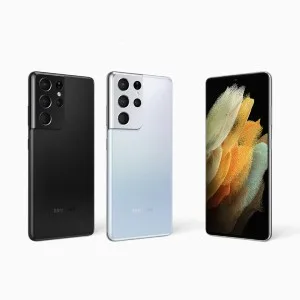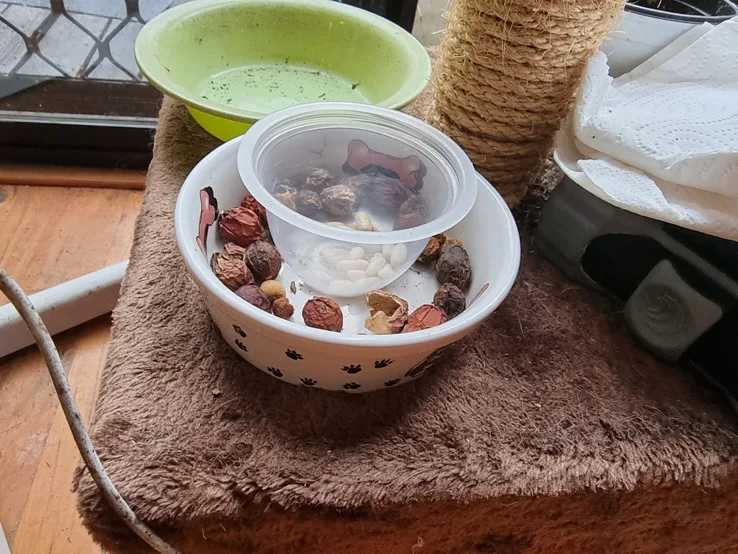Samsung Galaxy S21 Ultra 5G Review: Android flagship brilliance
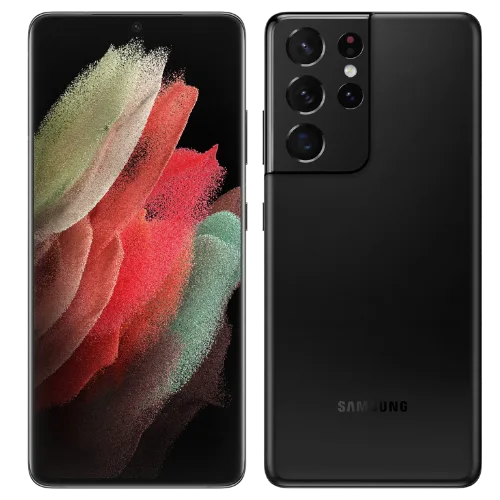
-
- Battery Score
4
- Camera Score
4.5
- Design Score
4
- Performance Score
4
- Battery Score
4
Summary
Quick verdict: If you can stand the price point, there’s an awful lot to like about Samsung’s highest tier Galaxy S21 handset.
- Flexible and capable cameras
- Delightful 120Hz display
- S-Pen compatibility
- Good battery life
- S-Pen isn’t standard
- Australia gets the weaker Exynos model (again)
- AI focus can go off-track
- No included charger or headphones
- No storage expansion
Details
Pricing & Availability
| RRP | $0 |
| Launch date | 2021-01 |
Looking for the latest model? Here's our review of the Samsung S22 Ultra.
In 2021, selling a flagship phone at a high price point is a really tough task. Budgets across the board are tight and expectations around phones have never been higher. At the same time some truly astonishing mid-range phones have seriously challenged the actual value in dropping nearly – or more than – $2,000 on a single handset.
The Samsung Galaxy S21 Ultra 5G isn't a low-cost handset, but you certainly can't accuse Samsung of not throwing everything it could into its latest flagship phone. There are a few missteps along the way, although most of these are true for the rest of the S21 range as well.
Still, if you're looking for the best Android flagship right now and can wear the asking price, this is the phone you should buy.
Design
Design
- 6.8-inch Dynamic AMOLED screen is great
- Contour-cut camera hides most of the camera bump well
- In-display fingerprint scanner is fast and accurate
- Five colours, although three are Samsung exclusives
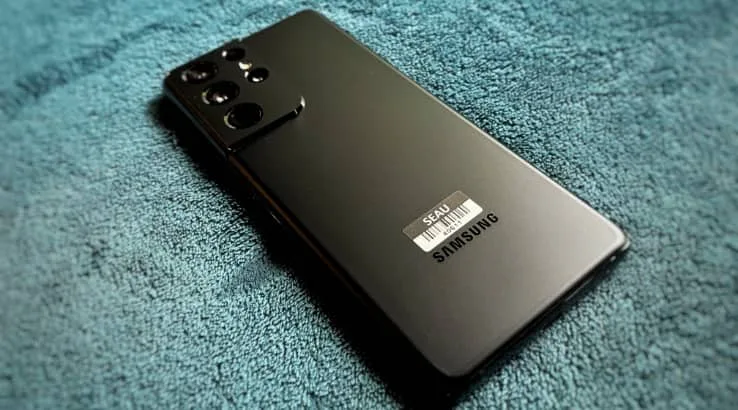
Like its prior Ultra-prefixed phones, the Galaxy S21 Ultra 5G is a big unit. It measures in at 165.1x75.6x8.9mm and weighs a chunky 227 grams, so you're getting a fair bit of phone for your money. The downside there naturally is that some people may struggle to use the Galaxy S21 Ultra 5G with a single hand.
At the front, the Galaxy S21 Ultra 5G features a 6.8-inch Quad HD+ Dynamic AMOLED display capable of displaying at between 10Hz and 120Hz, although that entirely depends on you putting into dynamic refresh rate mode. You can't pick full 120Hz all the time, although you can preserve a little battery life by fixing into 60Hz mode if you must. Really, if you're spending this much on a phone, it would be daft to do so except when you really had to. The one time I've noted where 60Hz is preferable is with some older Android games, where the screen refresh rate locks gameplay speeds and 120Hz can be a bit too much to handle.
Like the previously reviewed Samsung Galaxy S21, the Galaxy S21 Ultra 5G hides much of its rear camera bump via the clever use of a contoured side panel that effectively absorbs part of the side into the actual side of the camera. It's a small but quite powerful design note that stops the Galaxy S21 Ultra 5G's larger camera bump from feeling quite so prominent.
Samsung has really led the way in terms of quality in-display fingerprint sensors since it adopted them and the Galaxy S21 Ultra 5G is no exception. Its in-display ultrasonic sensor is easily the best in market, with very few false positives during my review period. Every couple of days you will be prompted by default to enter your passcode regardless, in the interests of security.
The Galaxy S21 Ultra 5G ships in five different "phantom" colour variants, although you could be forgiven for thinking that there were in fact only two of them. In most retail settings you'll have to pick between Phantom Black (as tested) or Phantom Silver.
Order through Samsung – and, at the time of writing, accept a bit of a shipping delay – and you can opt instead for Phantom Titanium, Phantom Navy or Phantom Brown. It has been quite a while since I've seen any retailer offering a brown phone to the local market, but at least the option is there.
One option that isn't there in the box as you might have expected would be included headphones. Samsung ditched headphone jacks for its premium phones a few years back and is once again following Apple's lead here with no included headphones or charger. That does make the Galaxy S21 Ultra 5G's box slimmer, but for those who like wired audio approaches, it could be a problem.
Camera
Camera
- Wide array of camera features at the rear
- Good night shooting
- Great for video
- Space Zoom still blows out at higher rates
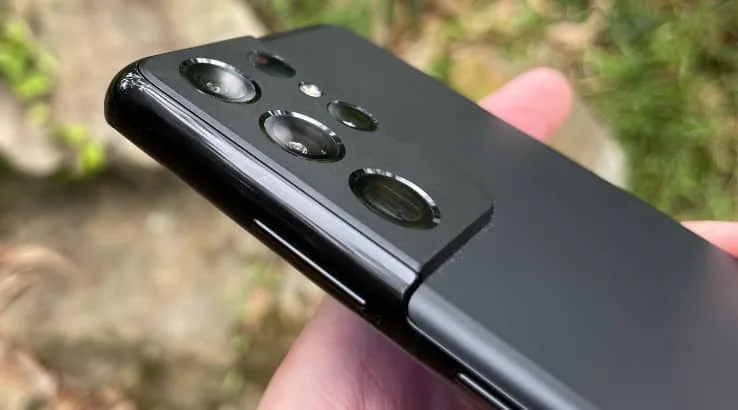
The camera array on the Galaxy S21 Ultra 5G is essentially that of the S21 or S21+, but on steroids. At the front there's a 40MP selfie camera in a tiny hole-punch notch, compared to the 10MP model on the smaller S21 phones.
At the rear, there's a primary 108MP wide angle camera, compared to the 12MP wide on the smaller phones, as well as a 12MP ultra wide that matches those phones precisely in specification terms.
The big point of difference between the Galaxy S21 Ultra 5G and its siblings is that while they all feature zoom lenses, the Galaxy S21 Ultra 5G is the first Samsung phone to feature dual zoom lenses. They're both running off 10MP sensors, with 3x and 10x zoom respectively. Like last year's Galaxy S20 Ultra 5G, this gives the Galaxy S21 Ultra 5G the ability to shoot with up to 100x zoom, or in Samsung parlance, "Space Zoom".
Just like last year's Space Zoom and every other iteration of high rate zoom on every other phone to pull this particular trick, when you push it out to the maximum, you end up with terrible, noisy photos that aren't worth much more than as a party piece, rather than something for serious photography. Where the Galaxy S21 Ultra 5G does benefit is in those lower zoom ratios. It's one of the only phones I've tested where up to 30x zoom in handheld mode can still deliver pleasing results. If you can push that down to 10x you can get some really great photos.
Naturally, daylight shots can be great, with some smart AI-led focusing mostly getting it right first time. I did hit a few instances where the AI seemed to juggle between focal points for longer than I would have liked if I was taking a rapid snapshot, but that's a feature that may improve over time if Samsung tweaks its camera software, which it has certainly done in the past.
The other area where flagship phones should impress is low-light performance. It's an area where Samsung has lagged pretty badly behind the likes of Apple, Huawei and Google in recent years, delivering good but not great results. To test this out, I grabbed the Galaxy S21 Ultra 5G, the Apple iPhone 12 Pro Max and the Google Pixel 5 and headed out one night to take some comparative photos at a local park and lookout spot. All shots were taken in handheld mode with the phone picking the night shot mode in each case.
First off, a straight shot across the park as the last rays of the sun were fleeing the encroaching night sky. I'd expect every phone to do pretty well and pretty closely here.
Here's how the Google Pixel 5 took the shot:![]()
Here's the iPhone 12 Pro Max's take:
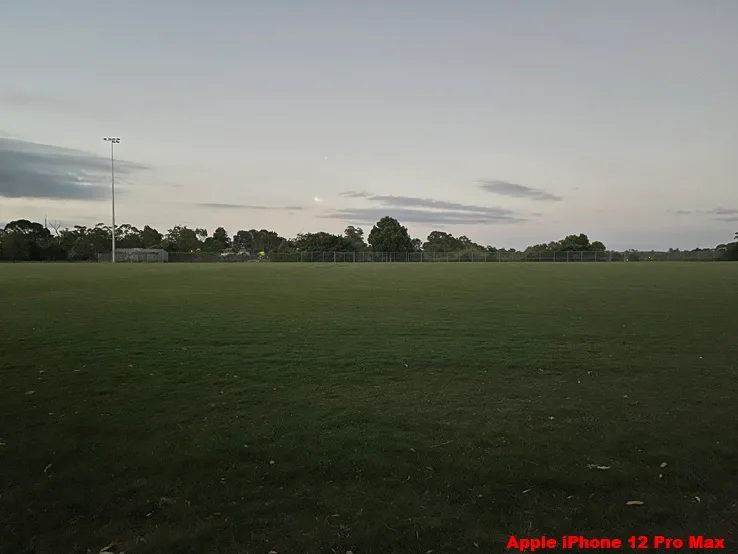
Finally, the Samsung Galaxy S21 Ultra 5G's shot:
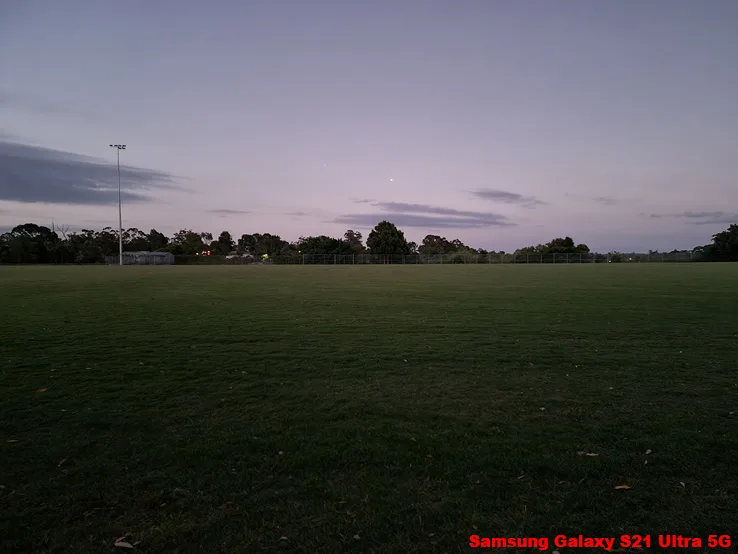
You can see the post-processing pretty clearly giving more of a true night feel there, as well as picking up plenty of detail. Still, there's not much between them.
Waiting a while and switching to a lit building gave the phones the chance to show off not only their night shooting capabilities, but also how they could handle contrast.
Here's the Pixel 5:
![]()
Here's the iPhone 12 Pro Max:
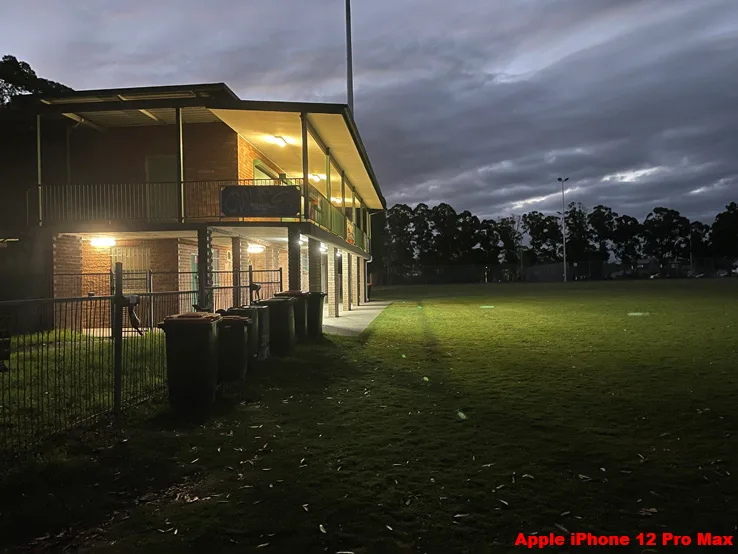
And finally the Galaxy S21 Ultra 5G:
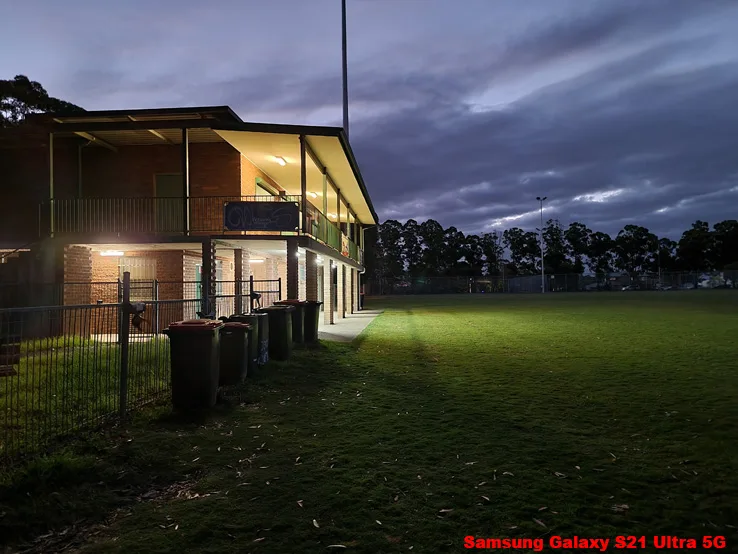
Again it's pretty close: the Pixel's computational photography slightly over-saturates colours as usual, but the level of detail that the S21 Ultra 5G picks out among the brighter lights is pretty impressive.
Waiting even later for light to vanish, I headed to a nearby lookout. Not because I wanted to gaze over the valley, because in this kind of light I really couldn't. To display this, I forced the Galaxy S21 Ultra 5G to ignore its night settings and take a straight shot with no assistance:

It's not a stunning view, really, but that's pretty much what I could see with my own eyes. This is a tougher test where I'm not looking for a fancy composition – just how much detail each camera could discern.
The Pixel 5 pretty clearly came third in this comparison, although it's still pretty impressive for a phone in its particular price bracket:
![]()
The iPhone 12 Pro Max fares better, getting more detail and a touch of the colour differentiation in the trees in the far background:

But this is a test that the Galaxy S21 Ultra 5G really did win, grabbing even more detail than its competitors. It's not a perfect shot – there's still some noise – but it's very impressive under the circumstances coming out of a smartphone:

The other area where the Galaxy S21 Ultra 5G stands out is for video, with support for up to 8K shooting – although you won't see that on the phone's display of course – and the same multi-lens director view also present on the Galaxy S21.
Samsung's phones have always played in that top tier of performance and you totally should expect that given their price points. With the Galaxy S21 Ultra 5G, Samsung has really stepped up to its competition in a big way, because this is a great camera phone for stills or video.
Performance
Performance
- Exynos 2100 is good, but the Snapdragon 888 would have been better
- No storage expansion – boo!
- S-Pen support works, even for seriously old S-Pens
- OneUI offers light Android tweaks
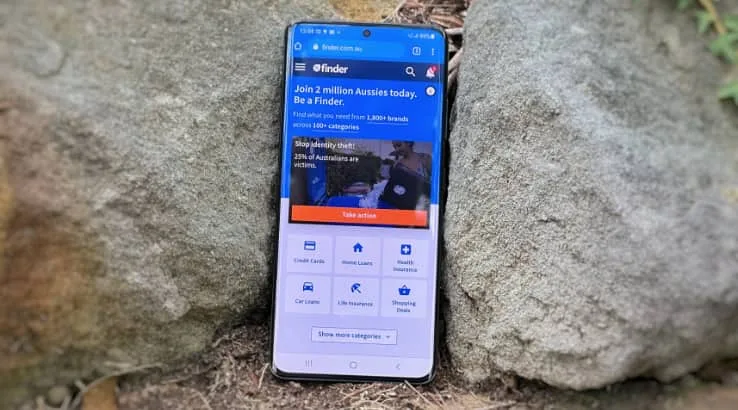
As the flagship of flagships in the Galaxy S21 range, the Galaxy S21 Ultra 5G comes with all the goodies in terms of Samsung's best-of-breed features… sort of.
That qualifier is there because, as it has done for years now, Samsung makes two distinct Galaxy S families. For some markets – notably the US and China – Qualcomm's highest end chipsets, this year the Snapdragon 888 – are used.
Elsewhere, including Australia, Samsung substitutes its own Exynos silicon, which this year means that we're getting the Exynos 2100 at the heart of our Samsung phones.
There's some reported differences in picture post-processing that I can't entirely comment on without being able to test them head-to-head, but typically what has been the case is that the Exynos silicon has been a tad slower than its Qualcomm equivalent in a given year.
External head-to-head tests do suggest that we're getting the lesser option here, but I was still keen to see how it fared comparatively using our standard benchmarks.
First up, Geekbench 5's CPU test, where the Exynos 2100 predictably falls behind Apple's A14 Bionic chip in a straight line CPU speed test. Still, the Galaxy S21 Ultra 5G ekes out the best-of-breed position for Android phones right now, although I'd expect that to shift when we see actual Snapdragon 888-based phones down under.
Shifting to 3D performance, the Galaxy S21 Ultra 5G did something I've never seen any phone do with our standard 3DMark suite of tests.
I'm used to some phones – typically models that are substantially cheaper than the Galaxy S21 Ultra 5G – refusing to run or delivering tiny scores on the 3DMark Slingshot Extreme OpenGL test.
The Galaxy S21 Ultra 5G went the other way, delivering a result of "Maxed Out!".
Yes, that exclamation mark is part of 3DMark's scoring regime, with the app noting that "Your Samsung Galaxy S21 Ultra 5G (Exynos 2100) is too powerful for this test".
The Exynos 2100 is the same chip as in the Galaxy S21, but that phone couldn't outpace 3DMark in the same way. Needless to say, if you're running an app that uses an OpenGL framework, the Galaxy S21 Ultra 5G will handle it without breaking a sweat.
It's not a total slam dunk for the Galaxy S21 Ultra 5G, though. Using the newer cross-platform Wild Life benchmark still puts it beneath the graphics chunking power of Apple's A14 Bionic processors, although again I'd be curious to see how the Snapdragon 888 equivalent S21 Ultra 5G managed.
Here's how the scores compared, noting that I've represented that maxed-out score as 10,000 in this table for purely visual comparison purposes.
Samsung sells the Galaxy S21 Ultra 5G with either 128GB, 256GB or 512GB of storage, but in a first for its Galaxy S line, all three models are fixed storage phones, with no support for microSD storage expansion. That's a pain, especially for that lower spec 128GB model. The top-tier 512GB also boosts the internal RAM up to 16GB, although the smaller storage models aren't exactly slumming it with 12GB of onboard RAM.
The Galaxy S21 Ultra 5G is also the first Galaxy S phone to include support for the S-Pen stylus that has been a feature of the Galaxy Note series since its inception. There are some catches here though, most prominently because while it's the only S21 phone with S-Pen support, you don't get an S-Pen in the box. You can buy one from Samsung, but there's no space in the Galaxy S21 Ultra 5G's body to store it. Samsung's solution for this is a case product – which again you'll have to shell out extra for – or, I guess, just keeping it nearby.
Samsung's claim is that the Galaxy S21 Ultra 5G is fully S-Pen compatible if you are an owner of a prior Note phone, so I decided to put that to the test. Reaching right at the back of Finder's cupboard of review models, I dusted off a Galaxy Note 3 – that's the model Samsung released back in 2013 for anyone keeping score – and pulled out its S-Pen.
Samsung has improved the feel and design of the S-Pen since the Note 3, but I was pleasantly surprised to discover that it worked with no fuss whatsoever. Standard note actions such as screenshots, annotations and AR Doodles worked nicely.
Because I'm a fully grown adult, I tested the S-Pen compatibility at length by colouring in some pineapples, as you would.

On the software front, the Galaxy S21 Ultra 5G ships with Android 11, with Samsung promising at least 3 full Android software upgrades during its lifespan. That puts it on a par with Pixel phones and Android One devices, although Samsung hasn't always been the speediest when it comes to actually shipping updates. Hopefully the promise of those future upgrades will put a little fire under their developers in this regard.
On top of Android 11 sits Samsung's own OneUI launcher. I'm something of a purist when it comes to Android, but among the third-party launcher Samsung's sits as my favourite, largely because it's logical and consistent, without adding too much clutter to the Android experience.
Battery life
Battery life
- 5,000mAh battery delivers the best Samsung battery life in a long time
- Wired or wireless charging
- No included charger
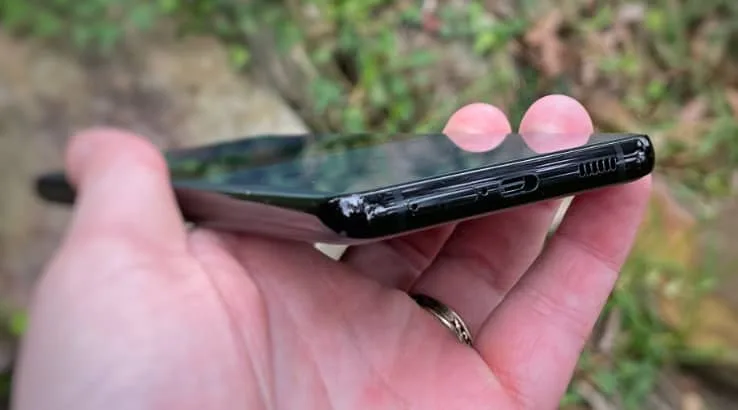
Samsung's big phones have all tended towards 5,000mAh batteries of late and the Galaxy S21 Ultra 5G is no exception. Where the Galaxy S21 Ultra 5G bucks the trend of recent Samsung phones is that its battery life is actually very good. Despite upping battery capacities, a lot of Samsung's flagship phones have left me wanting in the recent past, but not the Galaxy S21 Ultra 5G.
To test this, I first rang the Galaxy S21 Ultra 5G through our standard battery life test, looping a 1080p YouTube video for an hour with maximum brightness and moderate volume. A good indicator here is a battery life above 90%, with more power the better. The test was run twice, once at the fixed 60Hz rate and once at the dynamic up-to-120Hz rate.
Here's how the Galaxy S21 Ultra 5G compared against a range of premium handsets:
Those figures are good for a Samsung phone, but they're not the entire story. It's already pretty impressive that the Galaxy S21 Ultra 5G only drops a single percentage point if you opt for 120Hz usage in this test, but it's also not wholly indicative of how good the battery life can be. The Galaxy S21 Ultra 5G at 120Hz scored the same as the iPhone 12 Mini in that test, but having used both, I can happily say that the Galaxy S21 Ultra 5G can easily sail through a day's usage without fuss, whereas that's a rarity for the iPhone 12 Mini.
The Galaxy S21 Ultra 5G supports recharging via USB-C or Qi wireless, but there's a catch. Like Apple, Samsung has opted not to include a charger in the box with the Galaxy S21 Ultra 5G. It will support up to 25W wired chargers and 15W wireless charging, but that very much depends on the charger you're connecting the Galaxy S21 Ultra 5G to. Use an older lower-capacity charger and you'll wait a whole lot longer for the Galaxy S21 Ultra 5G to top up its internal battery.
You do still get reverse wireless charging or in Samsung-speak, "Wireless Powershare". At least here I'm more comfortable using when appropriate, because the Galaxy S21 Ultra 5G's battery endurance really is that good.
Should you buy the Samsung Galaxy S21 Ultra 5G?
- Buy it if you want the best premium-priced Android flagship right now.
- Don't buy it if you're happy to wait for the proper Snapdragon 888 competition.
The asking price for the Galaxy S21 Ultra 5G does put it in a particular position, because in 2021, the line between premium and mid-range in terms of quality and value is particularly tight. Realistically, for most folks the Samsung Galaxy S20 FE remains the Samsung phone to buy right now for value.
However, if you do want the best that Android can do right now and you can meet the asking price, there's not too much argument that this is what the Galaxy S21 Ultra 5G represents. It's a pity we don't get the technically superior Qualcomm variant and it will be interesting to see how competitor phones running that silicon match up to the Galaxy S20 Ultra 5G when they arrive on our shores.
Pricing and availability
Compare Samsung Galaxy S21 Ultra 5G plans
You can also purchase the Samsung Galaxy S21 Ultra 5G on a device repayment plan from Telstra, Woolworths, TeleChoice or Vodafone. This will split the cost of your new phone over 12, 24 or 36 months, and you'll get a mobile plan with it too.
Specifications
Display
Camera
Physical Dimensions
Connectivity
Power, storage and battery
Device features
Images: Alex Kidman
More Finder reviews
- Samsung Galaxy S25 Ultra review – Still an Android powerhouse
- iPhone 16 and 16 Plus review – Closing the gap
- iPhone 16 Pro and 16 Pro Max review – Shockingly good battery life
- Google Pixel 9 Pro XL review – Fantastic phone, even better cameras
- Samsung Galaxy Z Flip 6 review: Great phone held back by price
Alex Finder
Senior editor
You are about to post a question on finder.com.au:
- Do not enter personal information (eg. surname, phone number, bank details) as your question will be made public
- finder.com.au is a financial comparison and information service, not a bank or product provider
- We cannot provide you with personal advice or recommendations
- Your answer might already be waiting – check previous questions below to see if yours has already been asked
Finder only provides general advice and factual information, so consider your own circumstances, or seek advice before you decide to act on our content. By submitting a question, you're accepting our Terms Of Service and Finder Group Privacy & Cookies Policy.
This site is protected by reCAPTCHA and the Privacy Policy and Terms of Service apply.

